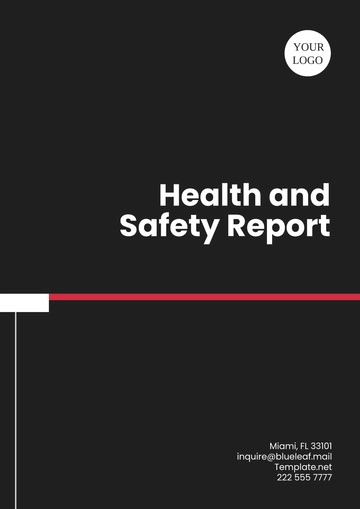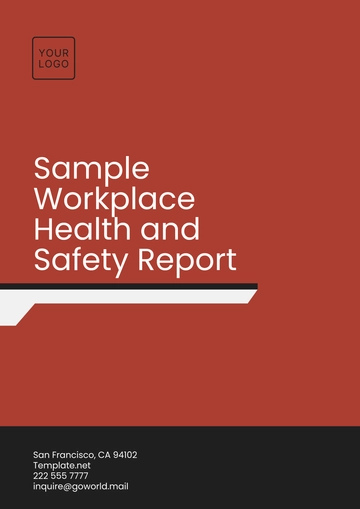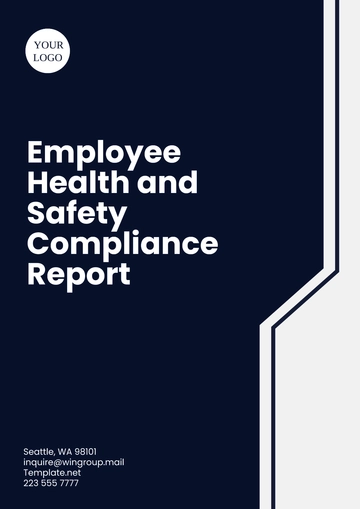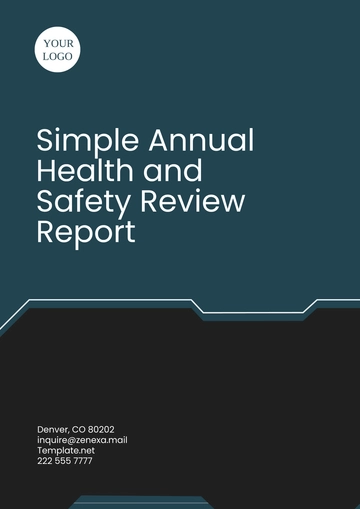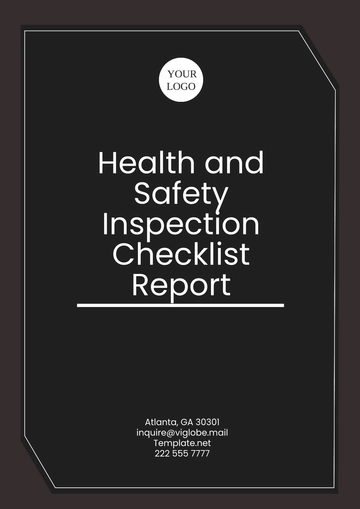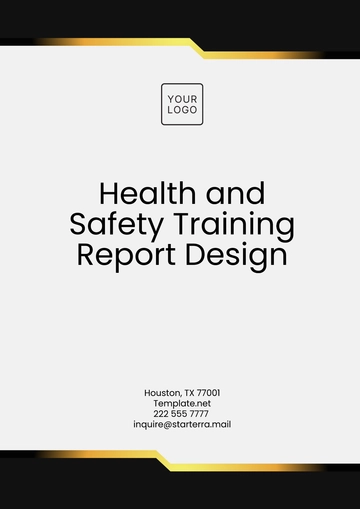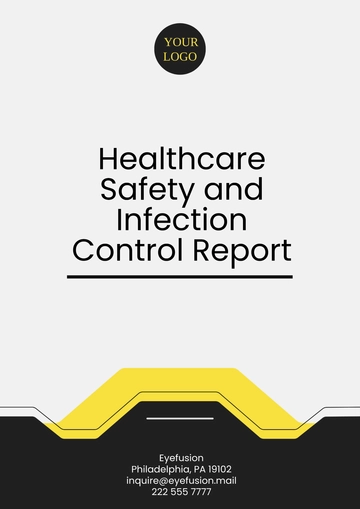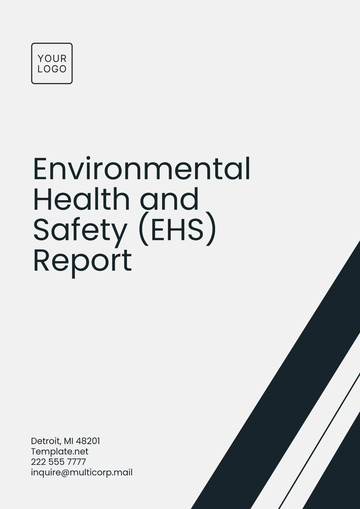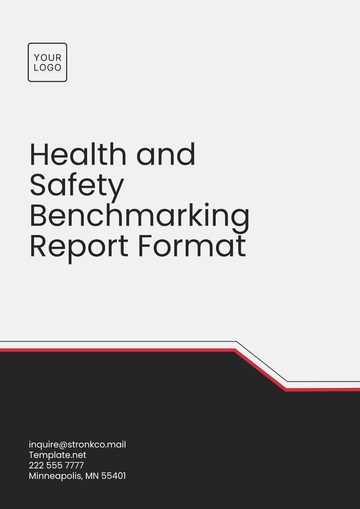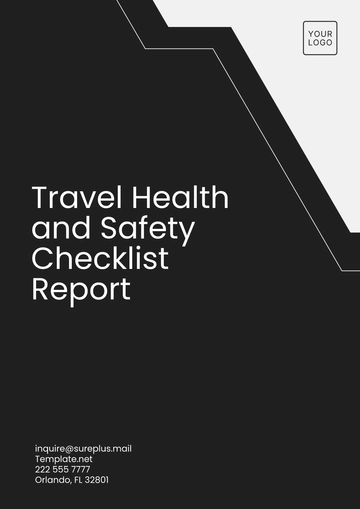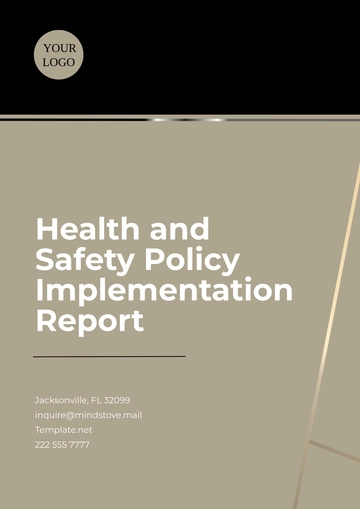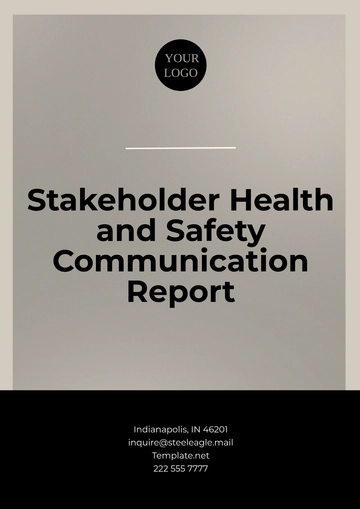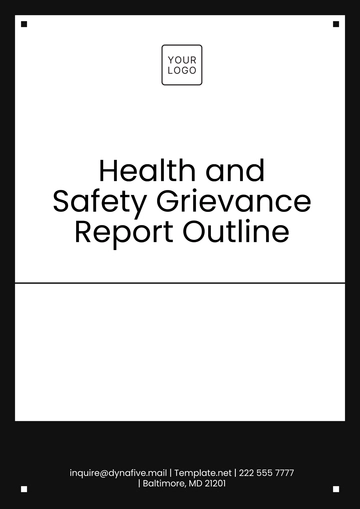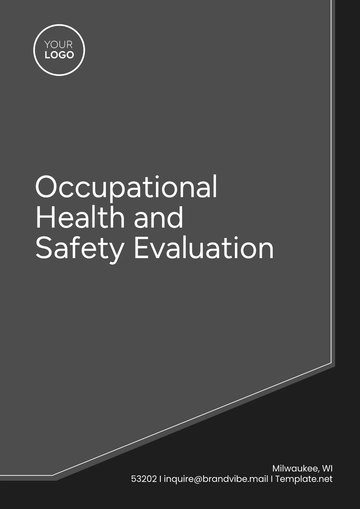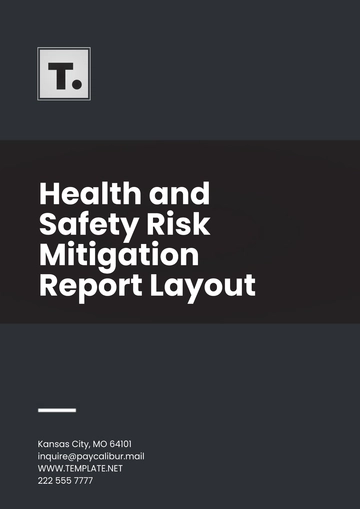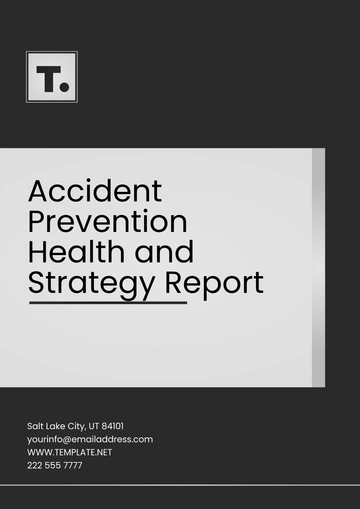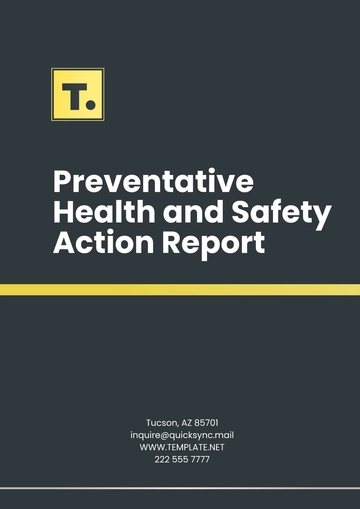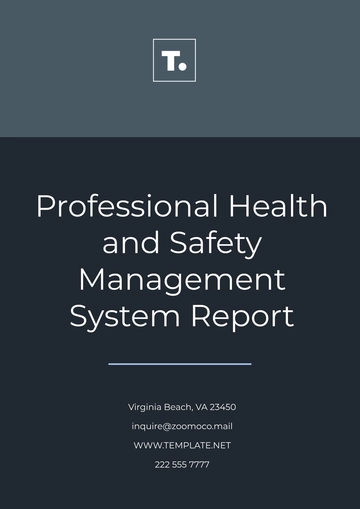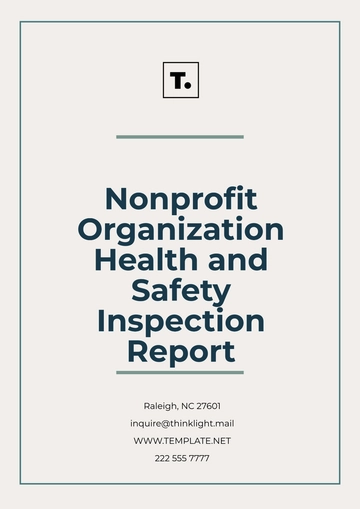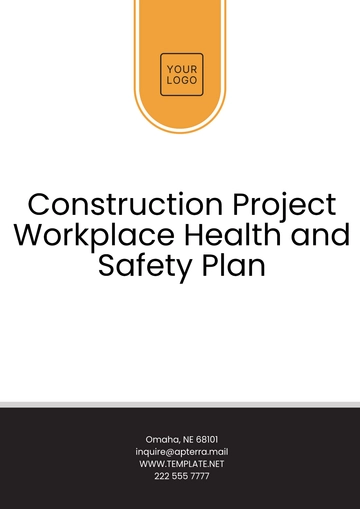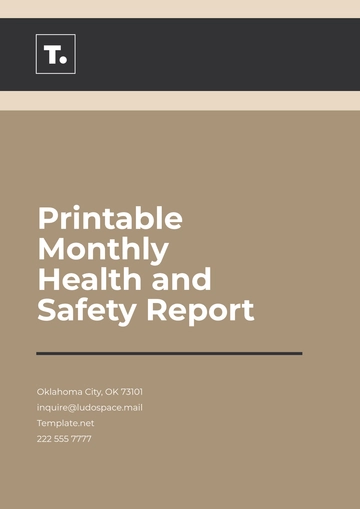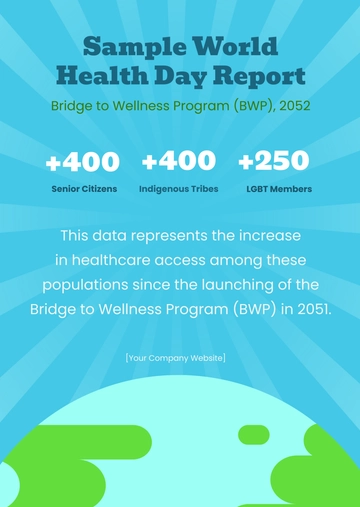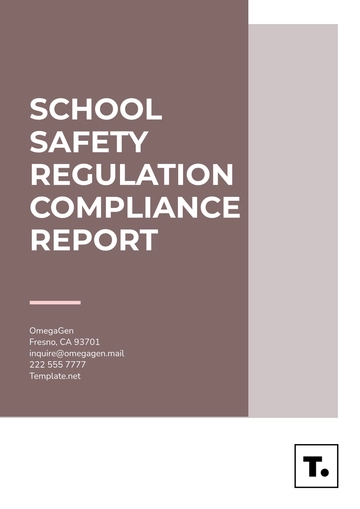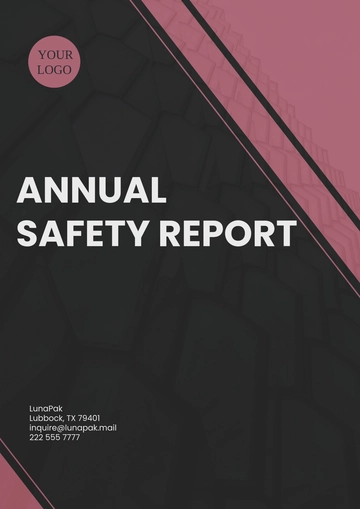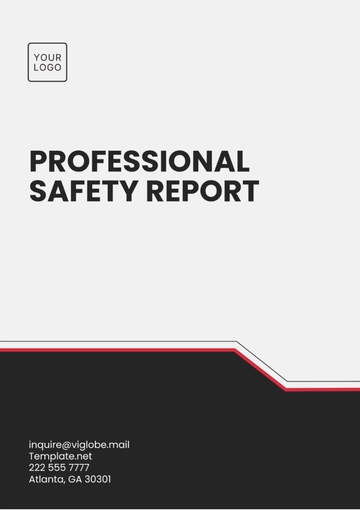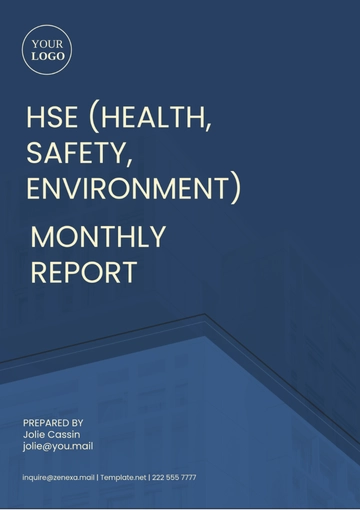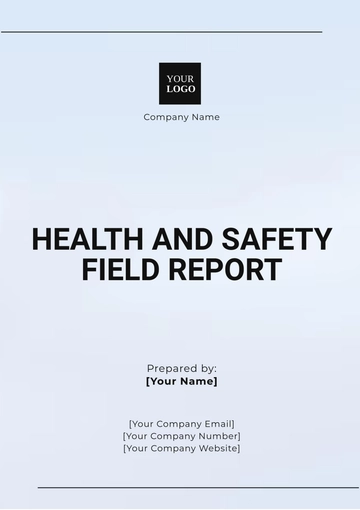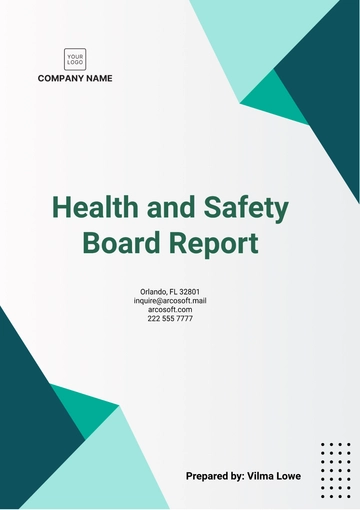Free Health & Safety Training Research Report
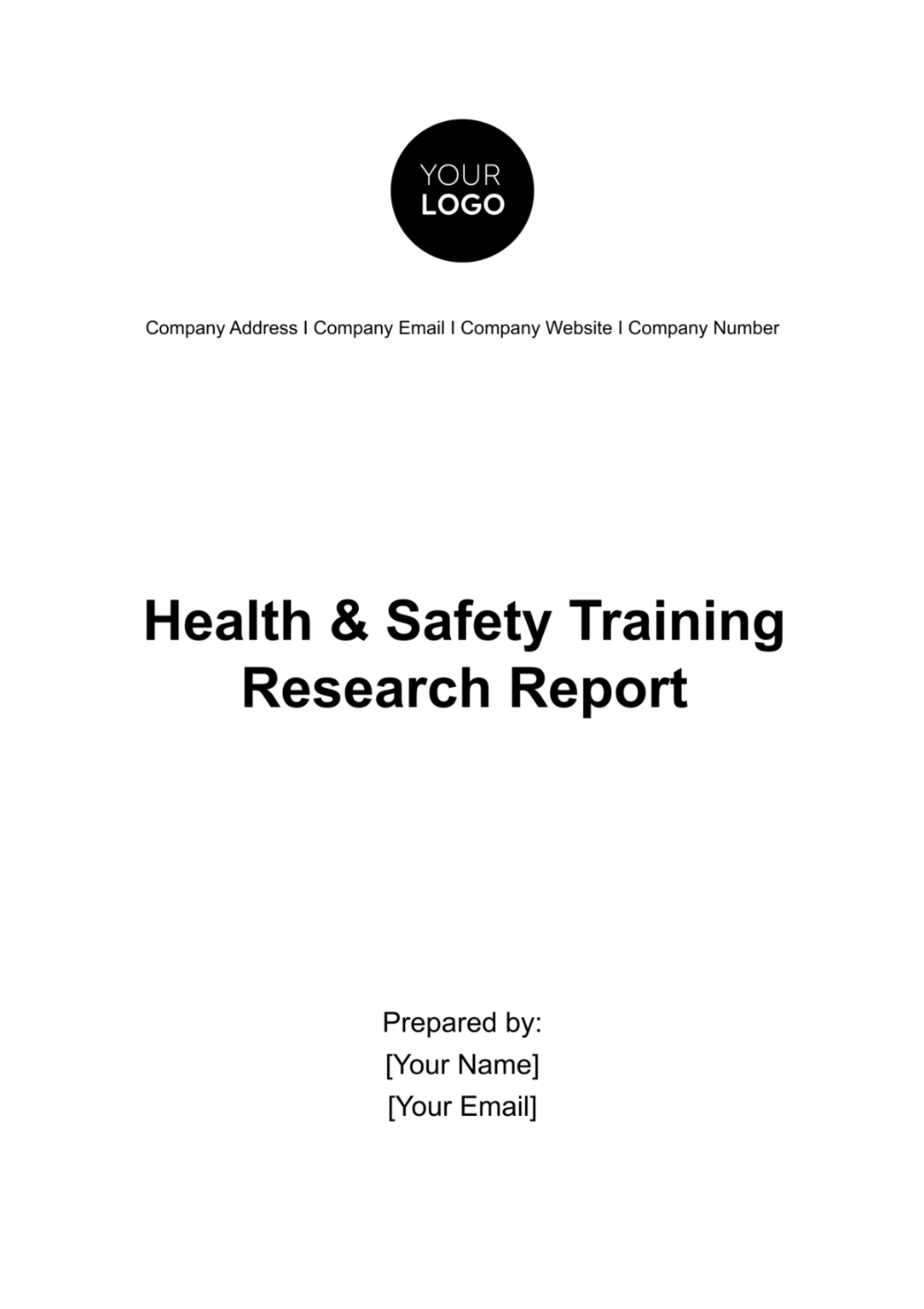
1. Introduction
The paramount importance of health and safety in the workplace cannot be overstated. In this comprehensive report, we delve into the intricacies of Employee Health & Safety Training Programs, assessing their effectiveness, reach, and areas for improvement. Our analysis is grounded in a thorough review of current practices, employee feedback, and industry benchmarks. The primary aim is to identify strategies that enhance safety, reduce risks, and foster a culture of health awareness in the workplace.
2. Current State of Workplace Safety
National Safety Standards
The foundation of workplace safety lies in adherence to national safety standards. These standards, set forth by regulatory bodies like OSHA (Occupational Safety and Health Administration), establish minimum requirements for safe working conditions. Below is a table summarizing key regulations:
Regulation | Description | Industries Affected |
[29 CFR 1910] | [General Industry Standards] | [Manufacturing, Service Sector, Healthcare] |
Industry-Specific Hazards
Different industries face unique safety challenges. The table below provides an overview of common hazards and corresponding accident statistics:
Industry | Common Hazards | 2050 Accident Rate (per 1000 employees) |
[Construction] | [Falls, Electrocution, Struck by Object] | [15.3] |
The construction industry continues to report the highest rate of workplace accidents, predominantly due to falls and electrocution incidents. In contrast, the manufacturing sector, while having a lower overall accident rate, faces significant challenges with machinery safety and hazardous material handling. Healthcare workers primarily face risks associated with sharps injuries and the physical demands of patient handling.
3. Evaluation of Existing Training Programs
Program Content
A critical aspect of any health and safety training program is its content. Our analysis of various existing programs across industries reveals a focus on key areas such as emergency response procedures, correct handling of machinery and hazardous materials, and workplace ergonomics. The table below provides a breakdown of common training topics:
Training Topic | Description | Frequency of Training Sessions |
[Emergency Response] | [Procedures for fires, spills, and other emergencies] | [Annually] |
Delivery Methods
Training delivery methods vary significantly, ranging from traditional in-person sessions to modern e-learning modules. The effectiveness of these methods has been a subject of debate. The following table compares different delivery methods based on employee feedback:
Delivery Method | Effectiveness Rating (out of 5) | Preferred by Employees (%) |
[In-Person Training] | [4.2] | [60%] |
Interactive workshops and on-the-job training score highest in effectiveness, but are less frequently utilized due to resource constraints.
4. Employee Awareness and Engagement
Survey Results
To gauge employee awareness and engagement in health and safety training, a survey was conducted across various sectors. Key findings include:
75% of employees feel adequately informed about workplace hazards.
Only 40% believe that current training adequately prepares them for emergency situations.
65% express a desire for more interactive and hands-on training experiences.
Engagement Strategies
The level of employee engagement in health and safety training is crucial. Engaged employees are more likely to retain information and apply safety practices. Strategies to enhance engagement include:
Gamification: Introducing game-like elements in training to make learning more engaging.
Peer-Led Training: Utilizing experienced employees to lead training sessions, creating a more relatable learning environment.
Feedback Mechanisms: Implementing channels for employees to provide feedback on training, fostering a sense of ownership and participation.
The data and insights from Sections 3 and 4 highlight the current state of health and safety training programs and the perceptions of employees regarding these programs. This information is essential for identifying areas for improvement and devising strategies to enhance the effectiveness of these training programs.
5. Technological Integration in Training
Current Technologies
The integration of technology in health and safety training has been a game-changer in many industries. Current technologies being used include Virtual Reality (VR) for simulating hazardous situations, Augmented Reality (AR) for real-time hazard identification training, and e-learning platforms for flexible learning schedules. The table below outlines the usage and effectiveness of these technologies:
Technology | Usage Description | Effectiveness Rating (out of 5) |
[Virtual Reality] | [Simulating high-risk scenarios for safe training] | [4.6] |
Potential Improvements
While current technologies have significantly enhanced training outcomes, there is still room for improvement. Potential advancements include:
AI-Driven Customization: Utilizing artificial intelligence to tailor training programs to individual learning styles and needs.
Mobile Learning Applications: Developing mobile apps for on-the-go learning and quick refreshers on safety protocols.
Interactive Simulations: Enhancing VR and AR simulations with more interactive elements to engage users in realistic decision-making scenarios.
6. Impact of Training on Workplace Incidents
Statistical Analysis
A quantitative analysis was conducted to understand the impact of effective training on reducing workplace incidents. The data reveals a direct correlation between comprehensive training and a decrease in incident rates. The following table illustrates these findings:
Year | Average Incident Rate (per 1000 employees) | Post-Training Incident Rate |
[2050] | [12.5] | [10.2] |
The consistent year-over-year decrease in post-training incident rates highlights the efficacy of improved training programs.
Case Studies
Several case studies further substantiate the impact of effective training. For instance, Company X, after implementing a VR-based hazard recognition training program, reported a 40% decrease in workplace incidents over a year. Company Y, which introduced a comprehensive e-learning and on-the-job training program, saw a 30% reduction in injuries from handling hazardous materials.
7. Best Practices from Industry Leaders
Benchmarking Analysis
An examination of industry leaders reveals several best practices in health and safety training. These companies have consistently demonstrated lower incident rates and high employee satisfaction scores. Key practices include:
Comprehensive Onboarding: Emphasizing health and safety from day one of employment.
Regular Refresher Courses: Ensuring continuous awareness and up-to-date knowledge.
Employee Involvement in Safety Committees: Encouraging employee participation in safety-related decision-making.
The following table compares the practices of three industry-leading companies:
Company | Key Practice | Incident Reduction (%) | Employee Satisfaction Rating (out of 5) |
[Your Company Name] | [VR-based Hazard Training] | [35%] | [4.7] |
[Your Company Name] | |||
[Your Company Name] |
Innovative Strategies
These companies also employ innovative strategies to enhance their training programs. For instance, [Your Company Name] developed a VR-based training module that simulates complex and high-risk environments, allowing employees to experience potential hazards in a controlled setting. Beta Industries established employee-led safety committees, giving workers a direct role in shaping safety policies. Gamma Solutions implemented mandatory quarterly refresher courses to keep safety protocols fresh in employees' minds.
8. Recommendations for Program Enhancement
Short-term Improvements
Based on our research, the following short-term recommendations are proposed to enhance existing health and safety training programs:
Introduction of Interactive E-Learning Modules: To make training more engaging and accessible.
Monthly Safety Briefings: To keep safety at the forefront of employees' minds.
Implementation of a Safety Suggestion Box: Encouraging employee feedback and involvement in safety matters.
Long-term Strategies
For sustainable improvement and long-term impact, the following strategies are recommended:
Investment in Advanced Training Technologies: Such as AI-driven customization and enhanced VR simulations.
Development of a Comprehensive Safety Culture: Where safety becomes an integral part of every employee's daily routine.
Continuous Monitoring and Improvement: Regularly updating training content based on new hazards, technologies, and best practices.
9. Cost-Benefit Analysis
Training Costs
A thorough cost analysis of various training methods reveals significant differences in initial investment and ongoing expenses. The table below provides a breakdown of the costs associated with each method:
Training Method | Initial Investment Cost | Annual Maintenance Cost |
[Traditional In-Person Training] | [$20,000] | [$5,000] |
Return on Investment
To quantify the benefits of these investments, a return on investment (ROI) analysis was conducted. Companies implementing advanced training methods reported:
Decrease in workplace incident costs by up to 40%.
Reduction in employee absenteeism by 25%.
Improvement in employee productivity by 15%.
This translates to significant financial savings and improved workplace morale, justifying the higher initial costs of more advanced training methods.
10. Conclusion
Summary of Findings
This report has systematically analyzed the current landscape of employee health and safety training. Key findings include:
Technological advancements in training methods significantly enhance learning outcomes.
Direct correlation between effective training and reduced workplace incidents.
High employee engagement in training programs leads to better safety practices.
Future Outlook
Looking ahead, the future of health and safety training lies in continuous innovation and adaptation. Embracing new technologies, fostering a culture of safety, and actively involving employees in safety initiatives are critical steps towards achieving a safer and more productive workplace. The recommendations provided in this report should serve as a roadmap for organizations aiming to enhance their health and safety training programs, ultimately contributing to their overall success and sustainability.
- 100% Customizable, free editor
- Access 1 Million+ Templates, photo’s & graphics
- Download or share as a template
- Click and replace photos, graphics, text, backgrounds
- Resize, crop, AI write & more
- Access advanced editor
Elevate your workplace safety standards with Template.net's Health & Safety Training Research Report Template. This comprehensive resource is fully editable and customizable using our intuitive Ai Editor Tool. Craft insightful and data-driven reports effortlessly, ensuring compliance and fostering a culture of safety within your organization. Trust Template.net for innovative solutions in health and safety training.
You may also like
- Sales Report
- Daily Report
- Project Report
- Business Report
- Weekly Report
- Incident Report
- Annual Report
- Report Layout
- Report Design
- Progress Report
- Marketing Report
- Company Report
- Monthly Report
- Audit Report
- Status Report
- School Report
- Reports Hr
- Management Report
- Project Status Report
- Handover Report
- Health And Safety Report
- Restaurant Report
- Construction Report
- Research Report
- Evaluation Report
- Investigation Report
- Employee Report
- Advertising Report
- Weekly Status Report
- Project Management Report
- Finance Report
- Service Report
- Technical Report
- Meeting Report
- Quarterly Report
- Inspection Report
- Medical Report
- Test Report
- Summary Report
- Inventory Report
- Valuation Report
- Operations Report
- Payroll Report
- Training Report
- Job Report
- Case Report
- Performance Report
- Board Report
- Internal Audit Report
- Student Report
- Monthly Management Report
- Small Business Report
- Accident Report
- Call Center Report
- Activity Report
- IT and Software Report
- Internship Report
- Visit Report
- Product Report
- Book Report
- Property Report
- Recruitment Report
- University Report
- Event Report
- SEO Report
- Conference Report
- Narrative Report
- Nursing Home Report
- Preschool Report
- Call Report
- Customer Report
- Employee Incident Report
- Accomplishment Report
- Social Media Report
- Work From Home Report
- Security Report
- Damage Report
- Quality Report
- Internal Report
- Nurse Report
- Real Estate Report
- Hotel Report
- Equipment Report
- Credit Report
- Field Report
- Non Profit Report
- Maintenance Report
- News Report
- Survey Report
- Executive Report
- Law Firm Report
- Advertising Agency Report
- Interior Design Report
- Travel Agency Report
- Stock Report
- Salon Report
- Bug Report
- Workplace Report
- Action Report
- Investor Report
- Cleaning Services Report
- Consulting Report
- Freelancer Report
- Site Visit Report
- Trip Report
- Classroom Observation Report
- Vehicle Report
- Final Report
- Software Report
